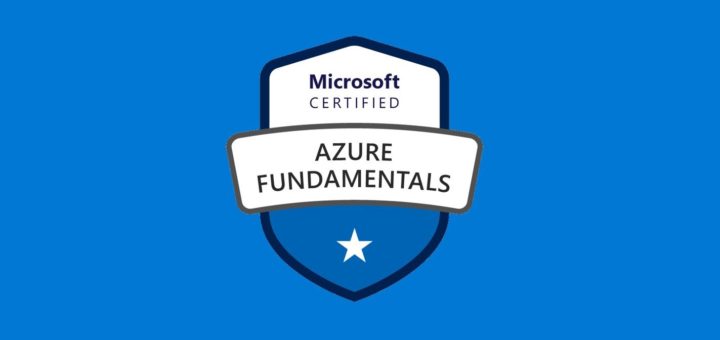Question #21
HOTSPOT –
From a website analytics system, you receive data extracts about user interactions such as downloads, link clicks, form submissions, and video plays.
The data contains the following columns.
You need to design a star schema to support analytical queries of the data. The star schema will contain four tables including a date dimension.
To which table should you add each column? To answer, select the appropriate options in the answer area.
NOTE: Each correct selection is worth one point.
Hot Area:
Correct Answer:
Box 1: DimEvent –
Box 2: DimChannel –
Box 3: FactEvents –
Fact tables store observations or events, and can be sales orders, stock balances, exchange rates, temperatures, etc
Reference:
https://docs.microsoft.com/en-us/power-bi/guidance/star-schema
Question #22
Note: This question is part of a series of questions that present the same scenario. Each question in the series contains a unique solution that might meet the stated goals. Some question sets might have more than one correct solution, while others might not have a correct solution.
After you answer a question in this section, you will NOT be able to return to it. As a result, these questions will not appear in the review screen.
You have an Azure Storage account that contains 100 GB of files. The files contain rows of text and numerical values. 75% of the rows contain description data that has an average length of 1.1 MB.
You plan to copy the data from the storage account to an enterprise data warehouse in Azure Synapse Analytics.
You need to prepare the files to ensure that the data copies quickly.
Solution: You convert the files to compressed delimited text files.
Does this meet the goal?
- A. Yes Most Voted
- B. No
Correct Answer: A
All file formats have different performance characteristics. For the fastest load, use compressed delimited text files.
Reference:
https://docs.microsoft.com/en-us/azure/sql-data-warehouse/guidance-for-loading-data
A (75%)
B (25%)
Question #23
Note: This question is part of a series of questions that present the same scenario. Each question in the series contains a unique solution that might meet the stated goals. Some question sets might have more than one correct solution, while others might not have a correct solution.
After you answer a question in this section, you will NOT be able to return to it. As a result, these questions will not appear in the review screen.
You have an Azure Storage account that contains 100 GB of files. The files contain rows of text and numerical values. 75% of the rows contain description data that has an average length of 1.1 MB.
You plan to copy the data from the storage account to an enterprise data warehouse in Azure Synapse Analytics.
You need to prepare the files to ensure that the data copies quickly.
Solution: You copy the files to a table that has a columnstore index.
Does this meet the goal?
- A. Yes
- B. No Most Voted
Correct Answer: B
Instead convert the files to compressed delimited text files.
Reference:
https://docs.microsoft.com/en-us/azure/sql-data-warehouse/guidance-for-loading-data
B (100%)
Question #24
Note: This question is part of a series of questions that present the same scenario. Each question in the series contains a unique solution that might meet the stated goals. Some question sets might have more than one correct solution, while others might not have a correct solution.
After you answer a question in this section, you will NOT be able to return to it. As a result, these questions will not appear in the review screen.
You have an Azure Storage account that contains 100 GB of files. The files contain rows of text and numerical values. 75% of the rows contain description data that has an average length of 1.1 MB.
You plan to copy the data from the storage account to an enterprise data warehouse in Azure Synapse Analytics.
You need to prepare the files to ensure that the data copies quickly.
Solution: You modify the files to ensure that each row is more than 1 MB.
Does this meet the goal?
- A. Yes
- B. No Most Voted
Correct Answer: B
Instead convert the files to compressed delimited text files.
Reference:
https://docs.microsoft.com/en-us/azure/sql-data-warehouse/guidance-for-loading-data
B (100%)
Question #25
You build a data warehouse in an Azure Synapse Analytics dedicated SQL pool.
Analysts write a complex SELECT query that contains multiple JOIN and CASE statements to transform data for use in inventory reports. The inventory reports will use the data and additional WHERE parameters depending on the report. The reports will be produced once daily.
You need to implement a solution to make the dataset available for the reports. The solution must minimize query times.
What should you implement?
- A. an ordered clustered columnstore index
- B. a materialized view Most Voted
- C. result set caching
- D. a replicated table
Correct Answer: B
Materialized views for dedicated SQL pools in Azure Synapse provide a low maintenance method for complex analytical queries to get fast performance without any query change.
Incorrect Answers:
C: One daily execution does not make use of result cache caching.
Note: When result set caching is enabled, dedicated SQL pool automatically caches query results in the user database for repetitive use. This allows subsequent query executions to get results directly from the persisted cache so recomputation is not needed. Result set caching improves query performance and reduces compute resource usage. In addition, queries using cached results set do not use any concurrency slots and thus do not count against existing concurrency limits.
Reference:
https://docs.microsoft.com/en-us/azure/synapse-analytics/sql-data-warehouse/performance-tuning-materialized-views https://docs.microsoft.com/en-us/azure/synapse-analytics/sql-data-warehouse/performance-tuning-result-set-caching
B (100%)
Question #26
You have an Azure Synapse Analytics workspace named WS1 that contains an Apache Spark pool named Pool1.
You plan to create a database named DB1 in Pool1.
You need to ensure that when tables are created in DB1, the tables are available automatically as external tables to the built-in serverless SQL pool.
Which format should you use for the tables in DB1?
- A. CSV
- B. ORC
- C. JSON
- D. Parquet Most Voted
Correct Answer: D
Serverless SQL pool can automatically synchronize metadata from Apache Spark. A serverless SQL pool database will be created for each database existing in serverless Apache Spark pools.
For each Spark external table based on Parquet or CSV and located in Azure Storage, an external table is created in a serverless SQL pool database.
Reference:
https://docs.microsoft.com/en-us/azure/synapse-analytics/sql/develop-storage-files-spark-tables
D (100%)
Question #27
You are planning a solution to aggregate streaming data that originates in Apache Kafka and is output to Azure Data Lake Storage Gen2. The developers who will implement the stream processing solution use Java.
Which service should you recommend using to process the streaming data?
- A. Azure Event Hubs
- B. Azure Data Factory
- C. Azure Stream Analytics
- D. Azure Databricks
Correct Answer:D
The following tables summarize the key differences in capabilities for stream processing technologies in Azure.
General capabilities –
Integration capabilities –
Reference:
https://docs.microsoft.com/en-us/azure/architecture/data-guide/technology-choices/stream-processing
D (100%)
Question #28
You plan to implement an Azure Data Lake Storage Gen2 container that will contain CSV files. The size of the files will vary based on the number of events that occur per hour.
File sizes range from 4 KB to 5 GB.
You need to ensure that the files stored in the container are optimized for batch processing.
What should you do?
- A. Convert the files to JSON
- B. Convert the files to Avro
- C. Compress the files
- D. Merge the files Most Voted
Correct Answer: B
Avro supports batch and is very relevant for streaming.
Note: Avro is framework developed within Apache’s Hadoop project. It is a row-based storage format which is widely used as a serialization process. AVRO stores its schema in JSON format making it easy to read and interpret by any program. The data itself is stored in binary format by doing it compact and efficient.
Reference:
https://www.adaltas.com/en/2020/07/23/benchmark-study-of-different-file-format/
D (98%)
3%
Question #29
HOTSPOT –
You store files in an Azure Data Lake Storage Gen2 container. The container has the storage policy shown in the following exhibit.
Use the drop-down menus to select the answer choice that completes each statement based on the information presented in the graphic.
NOTE: Each correct selection is worth one point.
Hot Area:
Correct Answer:
Box 1: moved to cool storage –
The ManagementPolicyBaseBlob.TierToCool property gets or sets the function to tier blobs to cool storage. Support blobs currently at Hot tier.
Box 2: container1/contoso.csv –
As defined by prefixMatch.
prefixMatch: An array of strings for prefixes to be matched. Each rule can define up to 10 case-senstive prefixes. A prefix string must start with a container name.
Reference:
https://docs.microsoft.com/en-us/dotnet/api/microsoft.azure.management.storage.fluent.models.managementpolicybaseblob.tiertocool
Question #30
You are designing a financial transactions table in an Azure Synapse Analytics dedicated SQL pool. The table will have a clustered columnstore index and will include the following columns:
✑ TransactionType: 40 million rows per transaction type
✑ CustomerSegment: 4 million per customer segment
✑ TransactionMonth: 65 million rows per month
AccountType: 500 million per account type
You have the following query requirements:
✑ Analysts will most commonly analyze transactions for a given month.
✑ Transactions analysis will typically summarize transactions by transaction type, customer segment, and/or account type
You need to recommend a partition strategy for the table to minimize query times.
On which column should you recommend partitioning the table?
- A. CustomerSegment
- B. AccountType
- C. TransactionType
- D. TransactionMonth Most Voted
Correct Answer:D
For optimal compression and performance of clustered columnstore tables, a minimum of 1 million rows per distribution and partition is needed. Before partitions are created, dedicated SQL pool already divides each table into 60 distributed databases.
Example: Any partitioning added to a table is in addition to the distributions created behind the scenes. Using this example, if the sales fact table contained 36 monthly partitions, and given that a dedicated SQL pool has 60 distributions, then the sales fact table should contain 60 million rows per month, or 2.1 billion rows when all months are populated. If a table contains fewer than the recommended minimum number of rows per partition, consider using fewer partitions in order to increase the number of rows per partition.
D (100%)











